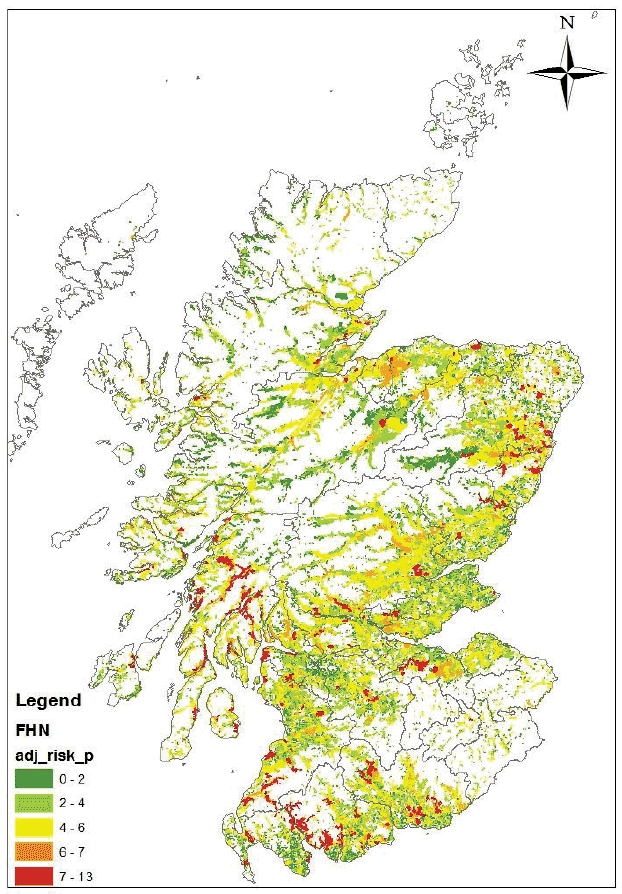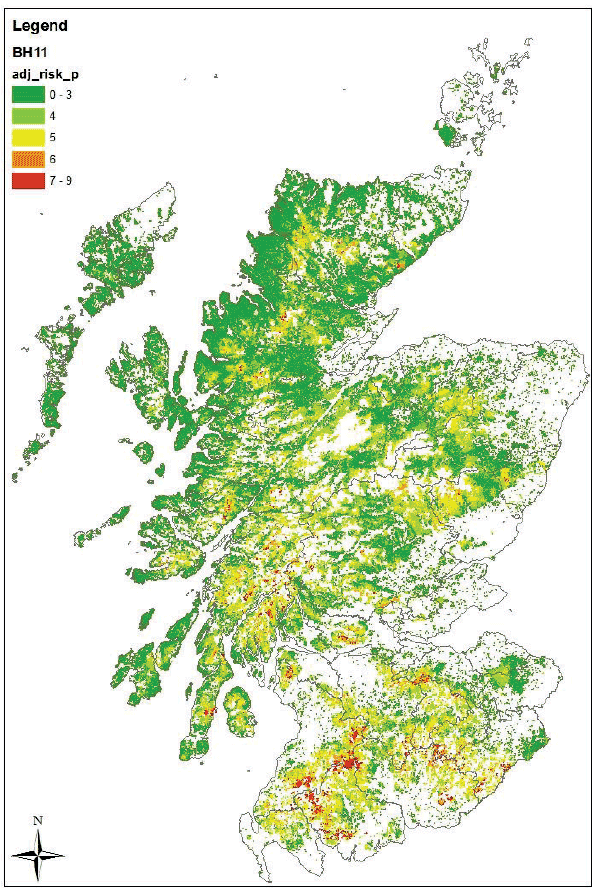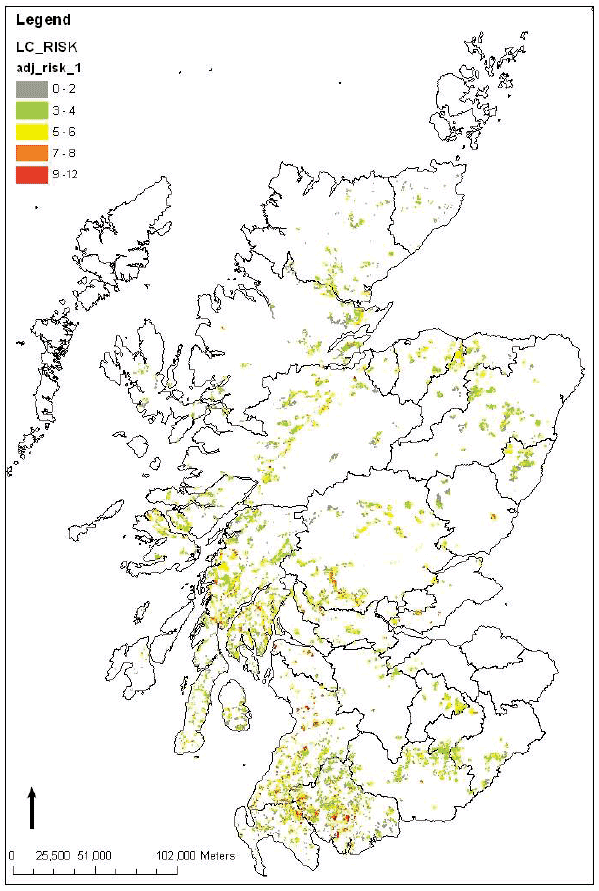Phytophthora ramorum and Phytophthora kernoviae in Scotland: status report
This paper sets out the history of these diseases in Scotland, the current situation and the actions being taken to control them.
4. Research
Established gardens and landscaped sites
In 2009 the Scottish Government funded a 3-year study into the epidemiology of P. ramorum and P. kernoviae in managed gardens and heathland in Scotland. This examined the behaviour of the pathogens in Scottish habitats and climate conditions, and outbreaks on heathland in England to improve our understanding of the impacts of these diseases. The full report is available at www.gov.scot/PhytophthoraResearch.
The project was a collaboration between Scottish Government Science Advice for Scottish Agriculture ( SASA), Centre for Ecology and Hydrology ( CEH), St Andrews University, James Hutton Institute ( JHI) and The Food and Environment Research Agency (Fera). Spore trap data from two historic garden outbreak sites showed that both pathogens were dispersed throughout the year and are active in a wide climatic spectrum, which is wider for P. ramorum than for P. kernoviae. Both pathogens were recovered frequently from soil samples even after the infected plants had been removed. There was no depletion of soil inoculum over the duration of the study. Some infected areas in one of the gardens could be tracked to the use of contaminated compost. P. ramorum was detected in water courses, drainage channels and ponds but water baiting for P. kernoviae was largely unsuccessful. Data about host distribution, local climate, vicinity of water courses and human activity were used to map the disease risk for the study sites and for native woodland, heathland and Larch for the whole of Scotland. This is shown in Figure 5.
Figure 5. Phytophthora ramorum risk scores for a) native woodland, b) heathland and c) Larch fragments across Scotland in April 2013

a) Woodland: Fragments in green had low risk of P. ramorum infection whilst fragments in yellow to red had medium to high risk of P. ramorum infection.

b) Heathland: Fragments in green had low risk of P. ramorum infection whilst fragments in yellow to red had medium to high risk of P. ramorum infection.

c) Larch: Fragments in grey have low risk of Phytophthora infection whilst fragments in green to red have medium to high risk of Phytophthora infection.
Key heathland species were tested for their susceptibility to P. ramorum and P. kernoviae. With the exception of blaeberry ( Vaccinium myrtillus, highly susceptible), cowberry and bearberry ( Vaccinium vitis-idaea and Arctostaphylos uva-ursi, both slightly susceptible) all hosts were resistant to both pathogens.
When P. ramorum was detected on larch in Galloway the Scottish Government extended the project for eight months for monitoring of the pathogen in heathland in the vicinity of infected larch plantations. The extension report is available at www.gov.scot/PhytophthoraResearch/Extension.
The results from this project and research carried out elsewhere have already helped inform the development of surveillance and management strategies for outbreaks in forestry and managed gardens. The results will also be used to inform actions at outbreaks in native woodlands and heathlands, should they occur in Scotland.
Genetic diversity of P. ramorum str ains
SASA's historic collection of P. ramorum isolates comprising 228 isolates, going back to the very first outbreaks in Scotland in 2002, was genotyped using seven microsatellite markers. Thirty different genotypes were discriminated. Although the genotyping confirmed that the Scottish P. ramorum population is clonal, it showed a higher genetic diversity than on the European continent with 13 genotypes unique to Scotland. Ten of those genotypes were site specific, often represented by single isolates. All but one of these were found in gardens or parks with some evidence that they had developed locally. The P. ramorum population in nurseries and garden centres showed a lower diversity. This was attributed to the fact that outbreaks in nurseries are usually detected earlier and quickly eradicated.
Three isolates collected in a garden in Galloway in 2011 showed a deviating microsatellite profile. These belonged to the new, recently described EU2 genetic lineage of the pathogen, which is so far only present in Northern Ireland and the south west of Scotland. Work by Forest Research has confirmed the presence of the EU2 strain (as well as the 'common' EU1 strain) in larch in Galloway.
Contact
There is a problem
Thanks for your feedback